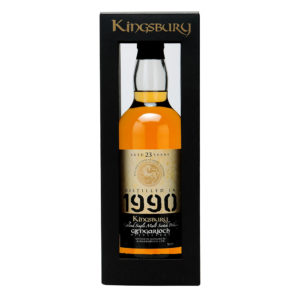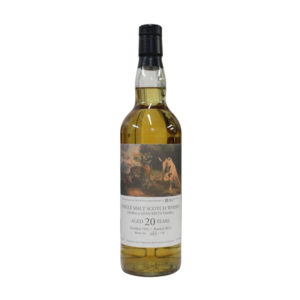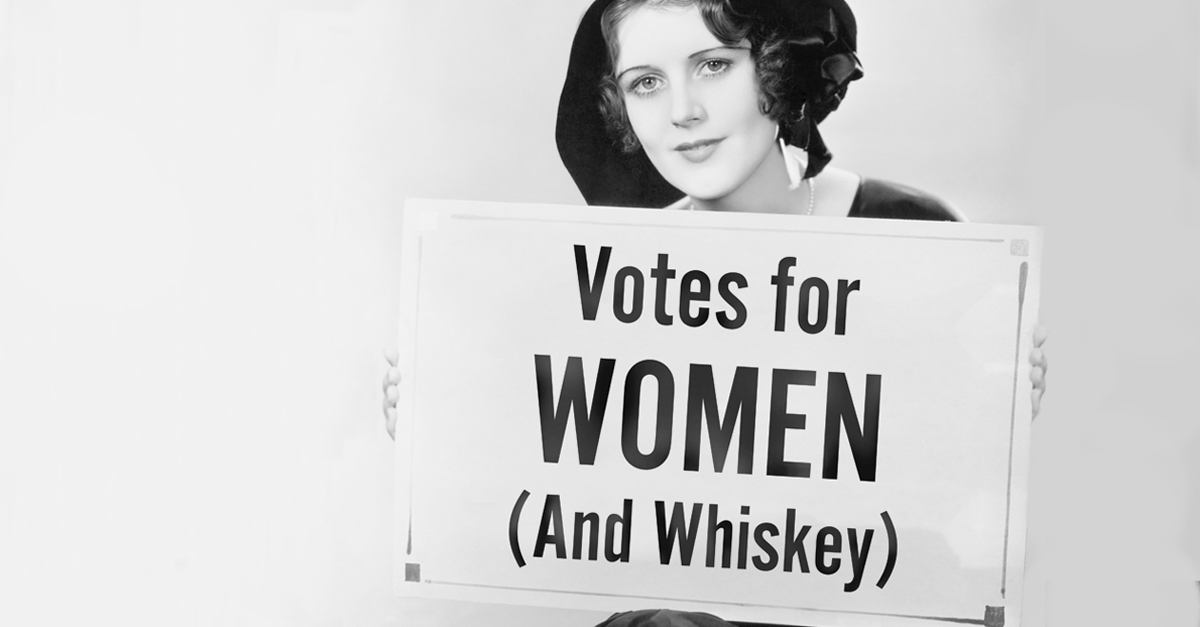Subtotal: $949.98
Women of great spirit: a cask strength history of the age-old relationship between women and whisky
Uncategorized
A little while ago, we had the pleasure of interviewing Anne-Sophie Bigot, also known as The Whisky Lady, about her love of whisky, her experience in the industry and – interestingly – the idea of ‘Women Who Whisky’. On the topic of women and whisky, Anne-Sophie had a lot of interesting things to say.
Firstly, that within the whisky industry, women are treated no differently from men. There are female distillers, female whisky experts and women working in every facet of the whisky industry – and there have been for as long as anybody can remember.
Women in whisky have been commonplace for a long time now and – within the industry – they’re really treated equally. From the outside though, it’s definitely not the same story, I can’t even count how many times I’ve been asked why I was working in the whisky industry as a woman.
She also mentioned that the idea of ‘women who whisky’ is a little reductive. While seemingly celebratory, the very wording of the phrase ‘women who whisky’ qualifies their achievements.
They’re not award-winning distillers, they’re award-winning female distillers. They’re not whisky lovers, they’re female whisky lovers.
With every qualification – every ‘female distiller bottles award-winning whisky’ headline – the implication is clear: these achievements aren’t considered in whisky terms, but in gendered terms.
In effect, it’s the whisky equivalent of ‘you’re pretty strong… for a woman’.
But, as Anne-Sophie says, ‘in 2017, being a woman in a supposed “men’s world” shouldn’t be regarded as strange or ballsy.’
A new Whisky Foundation series exploring, celebrating and bringing to light the longstanding relationship between women and whisky
Here at Whisky Foundation, we’re all about getting away from the dusty – and predominantly masculine – image of whisky drinking.
If drinking a whisky in a dimly lit room surrounding by books, mahogany and Chesterfields is your thing, then we want you to enjoy it. A quiet dram in a nice whisky lounge is – a lot of the time – as close to heaven as you can get.
But we don’t think that’s all whisky should be about.
Whisky is too good, too interesting and too exciting to confine itself the perception that it is just for men. (Which, as you’ll find out, has never been the case anyway.)
At Whisky Foundation, like the independent bottles that we love, we’re all about taking something from the establishment and doing something a little different with it. For independent bottlers, that involves bottling it at cask strength or aging it in sherry casks. For us at Whisky Foundation, it means making sure that whisky is enjoyed by everyone, not just the traditional male maltheads.
And so, over the course of this series, we’re going to look at the long-standing relationship between women and whisky. We’re going to celebrate the achievements of women in the industry based on the virtue of their achievements, not the fact that they were women. And we’re going to try to shine a light on the unfair underrepresentation of women in the history and coverage of whisky.
Hopefully, by the end of the series, we’ll have done a little bit to chip away at the stale, masculine image of whisky and to demonstrate that women love – and have always loved – distilling, selling and drinking whisky.
Women of Great Spirit: Part One
Forgotten pioneers of the whisky industry
The relationship between women and whisky goes all the way back to the beginning. In fact, without pioneering women, much of the alcohol we know and love today – especially our beloved whisky – would simply not exist.
For starters, it is widely believed that Maria Hebraea, (also known as Mary the Jewess, Maria the Jewess, Mary the Prophetess or – somewhat less theatrically – Miriam) pioneered and invented the still.
Granted, Maria (we’ll call her plain old Maria, for now) wasn’t attempting to create alcohol – she was an alchemist trying to create gold – but her process is still used to create liquid gold, if you will.
In fact, in Europe and America, the tribikos – Maria’s design for an alembic still – is still used to create a variety of alcohol, from brandy and whisky to Prohibition style moonshine.
On top of that, women are widely credited with the invention of beer and the fermentation of barley into a delicious beverage. (And, as we know, the brewing of beer led to the creation of whisky.) Across the ages – from Ancient Egypt through Norse societies through to Victorian England – beer was traditionally brewed by women. Men simply consumed it. (In Norse society, in fact, all brewing equipment was the legal property of women.)
Aqua vitae and persecution: the witch hunt years
Fast forward thousands of years to Medieval Europe, and women were more involved than ever with the alcohol making process. Their rights and legal status had been reduced significantly by the invading Norman forces, but women continued to distil ‘aqua vitae’ – a distilled wine, beer or spirit – for medicinal use.
All of that was to change, however, in the 1500s, as witch hunts became increasingly common. The possession of ‘aqua vitae’ was considered proof of witchcraft and was punishable by death. Between 1500 and 1660, as many as 80,000 women were burnt at the stake for practicing witchcraft, a great many for possession of aqua vitae.
Across the pond: another female revolution
For obvious reasons, the production of alcohol in Europe dropped off a little after the Medieval period.
But by the 1700s, especially in the USA, women were distilling alcohol at home again. In his book Whiskey Women: The Untold Story of How Women Saved Bourbon, Scotch and Irish Whisky, Fred Minnick notes that the ability to distil beer or spirits was often a requirement of women in marriage advertisements.
(FYI: marriage advertisements were put in local newspapers when a man wanted a wife. A little like the Lonely-Hearts page, Match.com or Tinder – depending on your age – it involved a man making an advert of desired qualities that women could then apply to. We imagine they went a little something like this: GSOH, outgoing, friendly, likes to take leisurely strolls on a Sunday. Oh, and must be able to distil whisky. Romance during this period was at a bit of an ebb, it seems.)
Conversely, it was during this period that whisky also became associated with extramarital activities. At the time, brothels were legally allowed to sell whisky. After noticing that the sales of whisky significantly increased their profit margins, the prostitutes working in the brothels used to sell it to their clients. And not in small quantities, either.
As The Atlantic points out, ‘in New York City in the 1850s, for example, women made more than $2 million a year in liquor sales—close to the $3 million they were making for sex.’
(Make sure you keep that link between prostitution and whisky in mind, we’ll be coming back to it when we look at why whisky came to be considered a man’s drink in a few weeks.)
Women responsible for the beginning and end of Prohibition (and for a fair amount of the bootlegging, too)
It didn’t take long for this clear link between alcohol and sin to reach the eyes of the Temperance Movement. For them, whisky – and all forms of alcohol – was the first step towards sin. As such, it needed to be eradicated from American society and, before long, Prohibition was introduced.
(Oh, in our whistle-stop tour, we forgot that in 1818, Catherine Spears Frye Carpenter – another of the women and whisky pioneers – invented the first recipe for sour mash that is now used on an industrial scale to produce whisky, most notably Jack Daniels.)
As everybody knows, Prohibition did nothing to stop the production or consumption of alcohol. And while the women of the Temperance Movement may have been instrumental in the introduction of Prohibition, there were just as many women who were just as instrumental in the skirting of it.
Making the most of the fact that it was illegal for male prohibition agents to search women (or, at the very least, it was frowned upon and considered immoral), women used to run bootlegging operations across the country. Some smuggled flasks in their skirts, others drove trucks and cars full of bootleg whisky to sell (alone, of course, to avoid being stopped) and some ran multimillion dollar outfits. (Most famously, Gertrude “Cleo” Lythgoe moved to the Bahamas, started a wholesale whisky business and made a killing by running it illegally to the States.)
In fact, Fred Minnick estimates that women sold five times more alcohol than men during the Prohibition. (And yet, of course, it was Al Capone and Lucky Luciano that went down in the history books.)
Finally, women were also responsible for the end of Prohibition and making alcohol legal again.
In 1926, Pauline Sabin, a prominent figure in New York politics, began to voice her objections to Prohibition. Initially, she had supported Prohibition as a result of the effectiveness of the Temperance Movement’s propaganda and rhetoric. By 1926, however, Prohibition was not only ineffective, but had led to heavier drinking, a glamorous image of criminals and – importantly – a generation of children growing up with no respect for the law of the Constitution.
In 1929, she founded the Women’s Organization for National Prohibition Reform. Through WONPR, Pauline changed the national consensus on Prohibition by framing it as a danger to children. She described how the Government was trying to tell mothers how to raise their children and how children are more at risk of alcoholism than they were before Prohibition was introduced.
Systematically, she reversed the arguments of the Temperance Movement, but kept their effective strategies and tactics. Soon, the WONPR was the largest repeal group in America and was winning battles to have alcohol regulated state-by-state. Eventually, on December 5 1933, Prohibition was repealed. Sabin’s work was done.
Prohibition and beyond
The strong, centuries long link between women and whisky didn’t end with the repeal of Prohibition. Far from it, actually. In the 84 years between the end of Prohibition and today, have been a remarkable number of pioneers that have a huge impact on the whisky industry.
But it has been during the last 84 years that whisky has developed a reputation as a decidedly masculine drink. Huge leaps in advertising and technology – from the dawn of TV and cinema all the way to the internet – have had a huge effect on the public perception of whisky as ‘not for girls’ and whisky drinking as a manly, testosterone-fuelled old boys club.
Next month, we explore – and hopefully dismantle – how that stale perception came to place and how the whisky industry might overcome it.
Did we miss any pioneering women of whisky history? Have you got any stories of your own about women and whisky? We’d love to hear them – just leave us a comment in the section below.
In the meantime, slainte.
Sources:
https://www.theatlantic.com/business/archive/2015/05/women-making-whiskey-an-800-year-history/393260/
https://vinepair.com/articles/the-secret-history-of-women-distillers/



 Glen Garioch 23 Year (Kingsbury, 1990)
Glen Garioch 23 Year (Kingsbury, 1990)  Glen Keith Aged 20 Years Single Malt
Glen Keith Aged 20 Years Single Malt 